Reviews
Quella villa accanto al cimitero
Lucio Fulci
Italy, 1981
Credits
Review by Rumsey Taylor
Posted on 05 January 2012
Source Blue Underground BRD
Categories Lucio Fulci’s Gates of Hell
The bulk of House by the Cemetery is set in New Whitby, a quiet New England town just outside of Boston. It’s the sort of place anchored, most likely, by a church steeple that punctures a leafy horizon so picturesque that one may reasonably assume that this is where autumn originates. It is meant to be an American setting so typical that the film’s ensuing horrors will render with greater effect.
Like other Lucio Fulci films, House by the Cemetery never feels American in the way it’s made to be. All the dialogue is imprecisely dubbed, like it is in so many European horror films, but that aside the film is nonetheless askew, maneuvering through New England at a paranoid, unpredictable pace, and populating it with characters who are constantly aware that something imperceptible is amiss. Their expectations - and, in turn, ours - are uncertain. The film settles into this place once the main characters, two cleanly parents, Norman Boyles and his wife Lucy, and their only child, Bob, have been drawn there from New York.
I must pause for a moment on Bob. “Bob” is a common nickname for a “Robert,” which also spawns the popular diminutives “Rob,” “Bobby,” etc. This is the sort of name that may benchmark its namesake’s lifespan; a “Robby,” for example, can grow into a “Rob” or “Robert.” “Bob” has a particular connotation in this sense, as it’s the most eroded and practiced variation of “Robert,” so familiar that, for a character in a movie, it’s bereft of the sort of originality necessary in supporting a fiction’s pretense. The Bob in this film is no hey-there’s-my-ole-fishing-buddy-Bob Bob, he is a child. Put him in overalls and some Keds and he’s exactly the sort of inquisitive kid to get wrapped up in the nefarious goings-on at a creaky old house with a cemetery in the front lawn. If he were a “Bobby,” his vulnerability in the face of these horrors would be sufficiently emphasized. Because he’s Bob - a discrepancy in characterization recalled each time his parents call out to him in a panicked, poorly dubbed imperative - he never fully enhances the concept that all this is meant to be horrifying.
Borrowing liberally from The Shining and Frankenstein, House by the Cemetery renders its central menace in the form of a reanimated corpse that threatens not only the Boyle family but those who seek to comprehend him. He is a supernatural menace, so part of the film’s horror is in how incomprehensible this menace is. Bob, however, comes closest: prior to his family’s arrival at the titular house, he comes upon a young girl, one close to his age, who warns him not to venture anywhere near the house. No one else can see her, and Bob’s relay of her warning is ascribed little merit by his parents.
Bob, it would seem as a result of his correspondence with the specter girl, possesses supernatural capabilities, much like little Danny - note, not “Dan” - in The Shining. This ability affords him a longevity that his parents lack, and as House by the Cemetery proceeds it’s at Bob’s hip, accompanying him to the cemetery, where he continues to speak to his spectral friend, or the basement that houses the ghoul of whom he has been warned.
The father has brought his family here at the behest of his employer, and his job is a mystified one: he’s to research turn-of-the-century architecture. Given this aim the house is of great interest to him, as it is both flanked by a cemetery and also lodges a tomb in its interior—a tomb that invariably belongs to the ghoul that will endeavor to eat him and his family.
Given the outcome of these circumstances, it may seem puzzling what significance any of these details have. The tomb on the house’s first floor, for example: the film may effectively be the same had it been in the front yard. But the location of the tomb is very much essential to House by the Cemetery’s endearing discrepancy. It is a fault of the viewer to question these things, to seek some sort of underlying logic of the sort that describes more assured entries in the horror canon. Fulci seems to have less interest in logic than he does in immediate, visceral shocks, even if these shocks are not ballasted by realism. His are tonally consistent films, with droning synthesizer scores, and they have an aspect of creative improvisation to them. House by the Cemetery opens, for one, with a grisly murder scene that bears little connection to the remainder. And at its midpoint Norman inadequately fends off a vampire bat—know that this is not a vampire film, and that the scene in question is noticeably protracted.
As a haunted house movie, House by the Cemetery possesses a multitude of menaces and scenes of authentic gruesomeness, and although things will get wrapped up somewhat customarily at the end, at great expense to the comfort of the Boyle family, it remains decidedly incoherent. Fulci entertained a preference for atmosphere in his previous film, The Beyond, and the same describes this film: an Italian horror film set in America, pivoting around a child with a curious appellation, and occurring at a house with a cemetery in the front yard.
More Lucio Fulci’s Gates of Hell
-
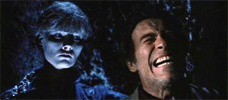
City of the Living Dead
1980 -
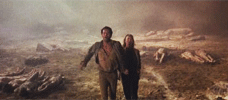
The Beyond
1981 -
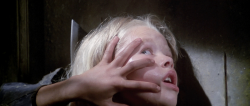
House by the Cemetery
1981 -
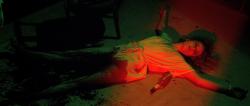
The New York Ripper
1982 -
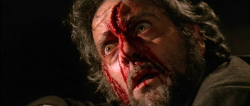
Manhattan Baby
1982 -
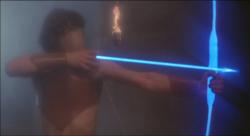
Conquest
1983
We don’t do comments anymore, but you may contact us here or find us on Twitter or Facebook.



